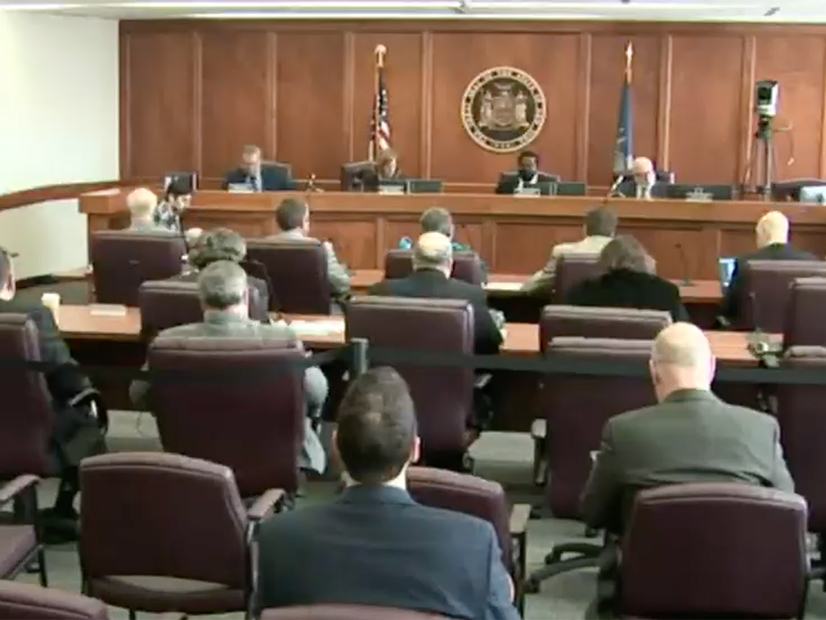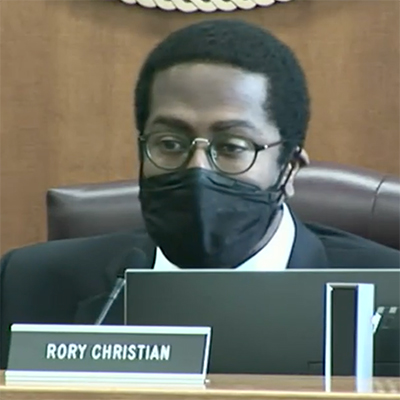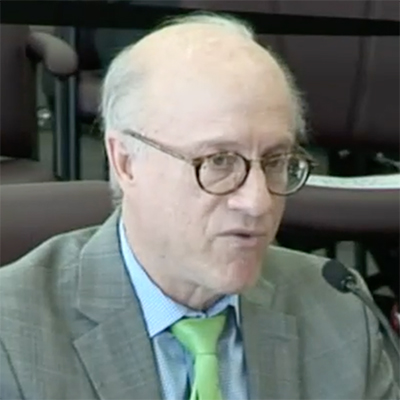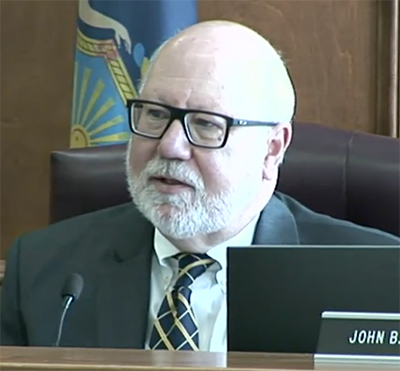
The New York Public Service Commission on Thursday voted 5-2 to approve separate 25-year state contracts to buy electric power from the 1,300-MW Clean Path New York (CPNY) and the 1,250-MW Champlain Hudson Power Express (CHPE) projects that will bring solar, wind and hydropower from upstate and Canada into New York City (15-E-0302).
 NYPSC Chair Rory Christian | NYDPS
NYPSC Chair Rory Christian | NYDPSThe two transmission projects, Tier 4 renewable resources under the state’s Clean Energy Standard, are projected to cut New York City (Zone J) fossil-fired generation by 51% and to bring up to $5.8 billion in social benefits, including greenhouse gas (GHG) reductions and air quality improvements and $8.2 billion in economic development across the state that will benefit disadvantaged communities.
“New York City relies heavily on aging fossil fuel generation — simply put, if we can’t deliver renewable energy to New York City we can’t reduce emissions from that fossil fuel fleet,” said PSC Chair Rory Christian. “Based on the over 30 proposals received, these options are the best available.”
The projects, he said, support the goals set by the Climate Leadership and Community Protection Act and align with the New York State Constitution supporting each person’s right to “clean air, water and a healthful environment.”
 NYPSC Commissioner Diane X. Burman | NYDPS
NYPSC Commissioner Diane X. Burman | NYDPSCPNY, developed by the New York Power Authority (NYPA) and Forward Power, a joint venture of Invenergy and energyRe, will be tied to 23 generation facilities and bring upstate solar and onshore wind into the city from its origin point in Delaware County with a start date of June 30, 2027. The constant rate contract over 25 years pays $129.75/MWh for 7,870,865 MWh/year for a total contract price of approximately $25.5 billion.
The CHPE, developed by Transmission Developers and Hydro-Québec’s U.S.-based subsidiary HQUS, will run from the state’s border with Canada to Queens, with portions of the line running underneath the Hudson River. Its contract begins Dec. 15, 2025, and increases by 2.5% per year. Starting at $97.50/MWh for 10,402,500 MWh/year, the 25-year total contract price is approximately $34.6 billion.
The actual program payments will be calculated at those strike prices minus reference energy and capacity pay prices as defined in each contract, with the renewable energy credit (REC) payments dependent on future energy and capacity commodity prices, said Marco Padula, an economist at the state’s Department of Public Services. “The petition presents ratepayer impacts that are projected as the net REC costs over time under a range of projected energy and capacity price forecasts.”
City Lights
New York City filed a notice in November stating its intent to enter into a 25-year contract with the New York State Energy Research and Development Authority (NYSERDA) to procure Tier 4 RECs, which, when combined with the city’s load share-based allocation of offshore wind RECs, would be equivalent to its entire load, said Robert Rosenthal, general counsel for the DPS.
 Robert Rosenthal, NYDPS | NYDPS
Robert Rosenthal, NYDPS | NYDPSThe city is taking a lead to reduce GHG emissions by backing up its policies with a significant financial commitment, providing a model for other branches of state and municipal governments to follow, Rosenthal said.
On April 9, the state Office of General Services (OGS) filed a letter of intent stating that it would also be entering into a contract with NYSERDA for Tier 4 RECs associated with energy used by all state agencies located in the city.
“DPS sees this all-of-government approach as a significant development that will meaningfully reduce utility ratepayer impact of implementing the CLCPA, and it will strongly encourage other branches of government to make commitments under Tier 4 similar to those made by New York City and OGS,” Rosenthal said.
The city’s efforts are encouraging signs that future investments will not solely be borne by ratepayers but spread out equitably through a more expansive all-of-government approach, Christian said.
 NYPSC Commissioner David Valesky | NYDPS
NYPSC Commissioner David Valesky | NYDPS“Many comments received, including those from the Real Estate Board of New York, highlighted the growing demand for RECs through voluntary corporate and consumer action as another potential source for savings,” he said. “It is likely that many building owners will procure Tier 4 RECs, potentially a very significant quantity of RECs, for compliance with various local laws, such as local law 97 in New York City,” Christian said. (See NY Stakeholders, Residents Split on HVDC Tx Projects.)
Commissioner David Valesky quoted from the comments filed by the largest property owners in the city who “are eager to explore participating in this voluntary market to determine how purchasing these RECs can enhance our corporate goals and local law 97 compliance strategies.”
Regarding voluntary participation versus mandates, “the reality of local law 97 cannot be understated and is significant to say the least, so I think these are important commitments,” Valesky said. “They’re meaningful commitments in terms of reducing the impact of these projects on ratepayers across the state.”
Ratepayer Concerns
The commission had to vote on the projects based on the record, which shows the known cost to ratepayers “are unacceptably high,” said Commissioner Diane X. Burman, who voted against the order.
Commissioner John B. Howard also voted no, concerned that the projects received little publicity and discussion west of the Hudson River.
 NYPSC Commissioner John B. Howard | NYDPS
NYPSC Commissioner John B. Howard | NYDPS“In fact, of those entities who commented from central and western New York, they were by and large opposed to this order,” Howard said. “While this petition received extensive press coverage from the New York City-based media, nary a word was written about it in the upstate media, so in any discussions I had with individuals upstate, they had little or no awareness of the impacts to customers in their region.”
He urged the commission to more aggressively seek the opinions of those customers who will pay most of the bills, since electricity customers outside of the city will pay 60% of the Tier 4 cost for the contracts.
“Even today, we have heard over and over again that the vast majority of benefits to this proposal accrue to New York City because customers pay for Tier 4 on a pure kWh basis,” Howard said. “Combined with a relatively lower cost retail electric cost outside of New York City, particularly upstate, the percentage of increase on customers’ bills will be higher upstate.”
The contracts, he said, will have a “disproportionate impact” on large customers and “we cannot sacrifice upstate New York economic competitiveness as we decarbonize our economy.”


